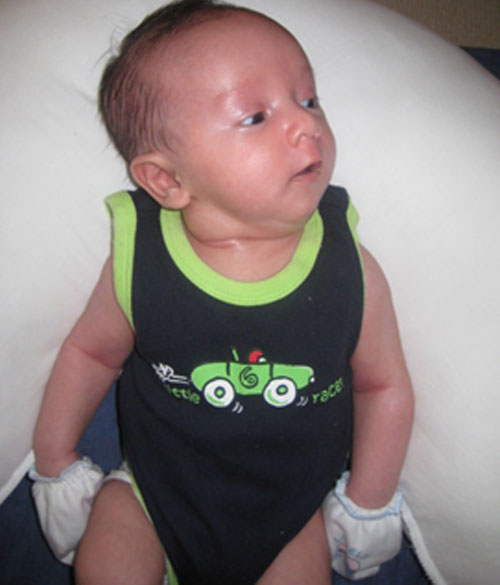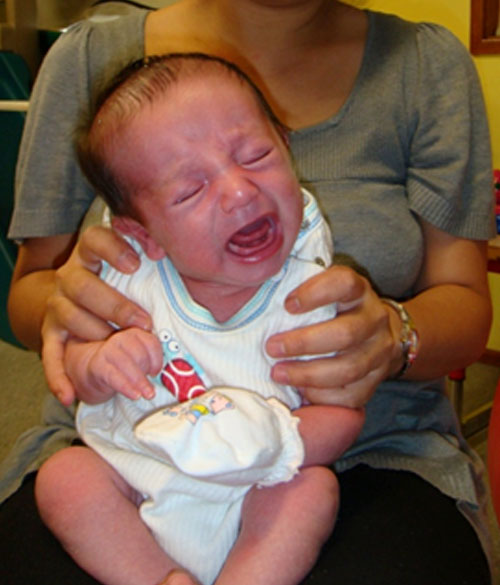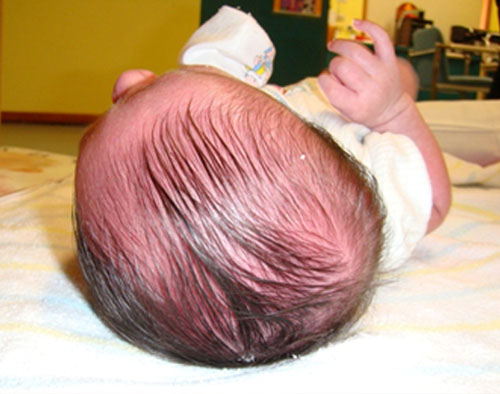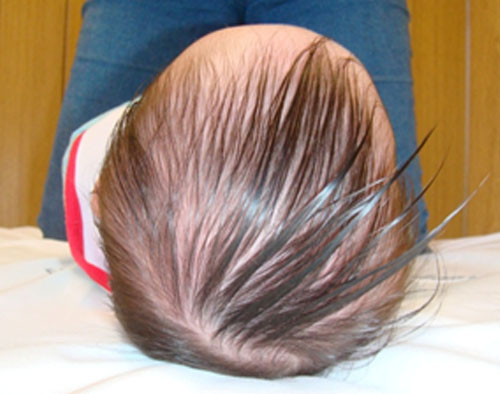
TORTICOLLIS
Does your baby tend to look to one side only? He could have Torticollis.
Torticollis
Torticollis is derived from Latin, and literally means a twisted neck. There are many different reasons why an infant may have torticollis. However, the most common form in infants is Congential Torticollis. Some infants with congenital torticollis have a lump in the neck called Sternocleidomastoid Tumour.
A Sternocleidomastoid Tumour is a firm fibrous mass in the midportion of the sternocleidomastoid muscle, occurring between two weeks and two months of age, and commonly disappearing in four to eight months; in some instances, torticollis may develop. It is believed by some to be a small hematoma due to injury to the muscle at birth. The Sternocleidomastoid Tumour is not a cancerous lump.
Risk Factors for Torticollis
The noted risk factors for Torticollis are:
- primiparous mother, (first time mums)
- large birth weight,
- male gender,
- breech position,
- multiple birth, and
- maternal uterine abnormalities.

baby at 3 weeks old

baby at 3 weeks old
Torticollis can present with or without a palpable sternocleidomastoid tumour but often neck movements are limited because of the shortening of the sternocleidomastoid muscle. Classic Torticollis presents as limited range of neck rotation to the ipsilateral (same) side and limited neck side flexion to the contralateral (opposite) side. However, babies with Torticollis often present with a variety of possible combinations of limited neck movements. Parents often report that their baby tends to prefer looking to one side most of the time. With persistent contracture of the sternocleidomastoid muscle, deformities of the face and skull result and are apparent within the first year of life. This often results in Acquired Plagiocephaly / Deformational Plagiocephaly.

baby at 3 weeks old
Consequences of Torticollis and Acquired Plagiocephaly
Left untreated, Torticollis and Plagiocephaly can result in permanent distortion of the head as well as persistent facial asymmetry.
The persistent side preference as a result impacts on the infant developing normal midline movement, awareness of both sides of their body, bilateral arm use and ultimately delays their gross motor skills development.
How My Favourite Physio can help
Torticollis can present with a variety of possible combinations of limited neck movements, with or without a palpable sternocleidomastoid muscle tumour and ranging from very mild to severe acquired plagiocephaly. At My Favourite Physio, we have expert knowledge and skills to carry out a full assessment of babies’ neck muscles and head shape, in order to correctly diagnose and effectively treat Torticollis. When discovered early, and appropriate stretching exercises and positioning are followed consistently, 80% recover completely with no long-term effects. In a very small number of cases that do not respond to exercises by age 1, surgical release of the sternocleidomastoid muscle may be required later in life.

baby at 6 months old

baby at 6 months old
Torticollis and Plagiocephaly can be effectively treated with Physiotherapy. Early intervention is the key to a successful outcome. The best outcomes are achieved when babies are assessed and treated as soon as parents notice that baby has a preference to one side, before Acquired Plagiocephaly occurs.
Worried about your baby always looking to one side? Is your baby’s head starting to flatten around the back on one side? Don’t wait another day to correct the problem! Ring today on 02 9790 4233 to book an appointment with our Paediatric Physiotherapist and let us help your baby start looking equally to both sides and prevent a worsening headshape.
